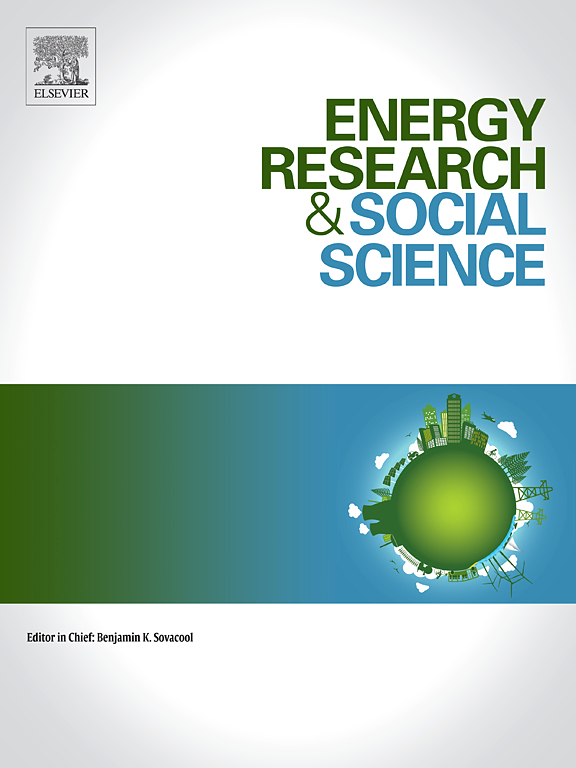驯化技术:丹麦碳捕获和储存的社会技术想象
IF 6.9
2区 经济学
Q1 ENVIRONMENTAL STUDIES
引用次数: 0
摘要
近年来,碳捕集与封存(CCS)在国家和企业实现气候目标的战略中获得了新的关注。例如,在丹麦,CCS被定位为2020年气候计划中最大的单一减缓工具。作为国际上对缓解技术的想象如何转化为国家环境的一个例子,本文探讨了CCS是如何被引入、适应和采用丹麦气候政策的。根据文件分析、网络研讨会观察和半结构化访谈,我们确定了四个论点(必要性、能力、能力和机会),不同的参与者动员起来,共同发展一个依赖ccs的气候未来的社会技术想象。这些论点得到了地图和数字的支持,这些地图和数字充当了客观真理,发挥了表演作用,并使未来的想象合法化。我们认为,地图和数字在以下三方面作为驯化CCS的工具:国有化、利用和控制技术以及反对它。我们的结论是,地图和数字通过驯化,使依赖ccs的未来的STI自然化和非政治化。虽然这可能不是参与者有意为之,但它说明了人工制品和争论设计特定技术-政治途径的能力。本文章由计算机程序翻译,如有差异,请以英文原文为准。
Domesticating technology: Sociotechnical imaginaries of carbon capture and storage in Denmark
Carbon capture and storage (CCS) has in recent years gained new attention in national and corporate strategies for achieving climate goals. This is for instance seen in Denmark, where CCS was positioned as the largest single mitigation tool in the 2020 Climate Programme. As an example of how international imaginaries of mitigation technologies translate into national settings, this paper explores how CCS was brought into, adapted and adopted in Danish climate policy. Drawing on document analysis, webinar observation and semi-structured interviews, we identity four arguments (necessity, ability, capacity and opportunity) that various actors mobilise to develop a shared sociotechnical imaginary of a CCS-dependent climate future. These arguments are supported by maps and numbers that act as objective truths, serve performative roles and legitimise the future imaginary. We argue that maps and numbers function as tools for domesticating CCS in three ways: nationalising, utilising and controlling technology as well as the opposition to it. We conclude that maps and numbers, through domestication, naturalise and depoliticise the STI of a CCS-dependent future. While this may not be intentional by the actors involved, it illustrates the ability of artefacts and arguments to devise specific techno-political pathways.
求助全文
通过发布文献求助,成功后即可免费获取论文全文。
去求助
来源期刊

Energy Research & Social Science
ENVIRONMENTAL STUDIES-
CiteScore
14.00
自引率
16.40%
发文量
441
审稿时长
55 days
期刊介绍:
Energy Research & Social Science (ERSS) is a peer-reviewed international journal that publishes original research and review articles examining the relationship between energy systems and society. ERSS covers a range of topics revolving around the intersection of energy technologies, fuels, and resources on one side and social processes and influences - including communities of energy users, people affected by energy production, social institutions, customs, traditions, behaviors, and policies - on the other. Put another way, ERSS investigates the social system surrounding energy technology and hardware. ERSS is relevant for energy practitioners, researchers interested in the social aspects of energy production or use, and policymakers.
Energy Research & Social Science (ERSS) provides an interdisciplinary forum to discuss how social and technical issues related to energy production and consumption interact. Energy production, distribution, and consumption all have both technical and human components, and the latter involves the human causes and consequences of energy-related activities and processes as well as social structures that shape how people interact with energy systems. Energy analysis, therefore, needs to look beyond the dimensions of technology and economics to include these social and human elements.
 求助内容:
求助内容: 应助结果提醒方式:
应助结果提醒方式:


